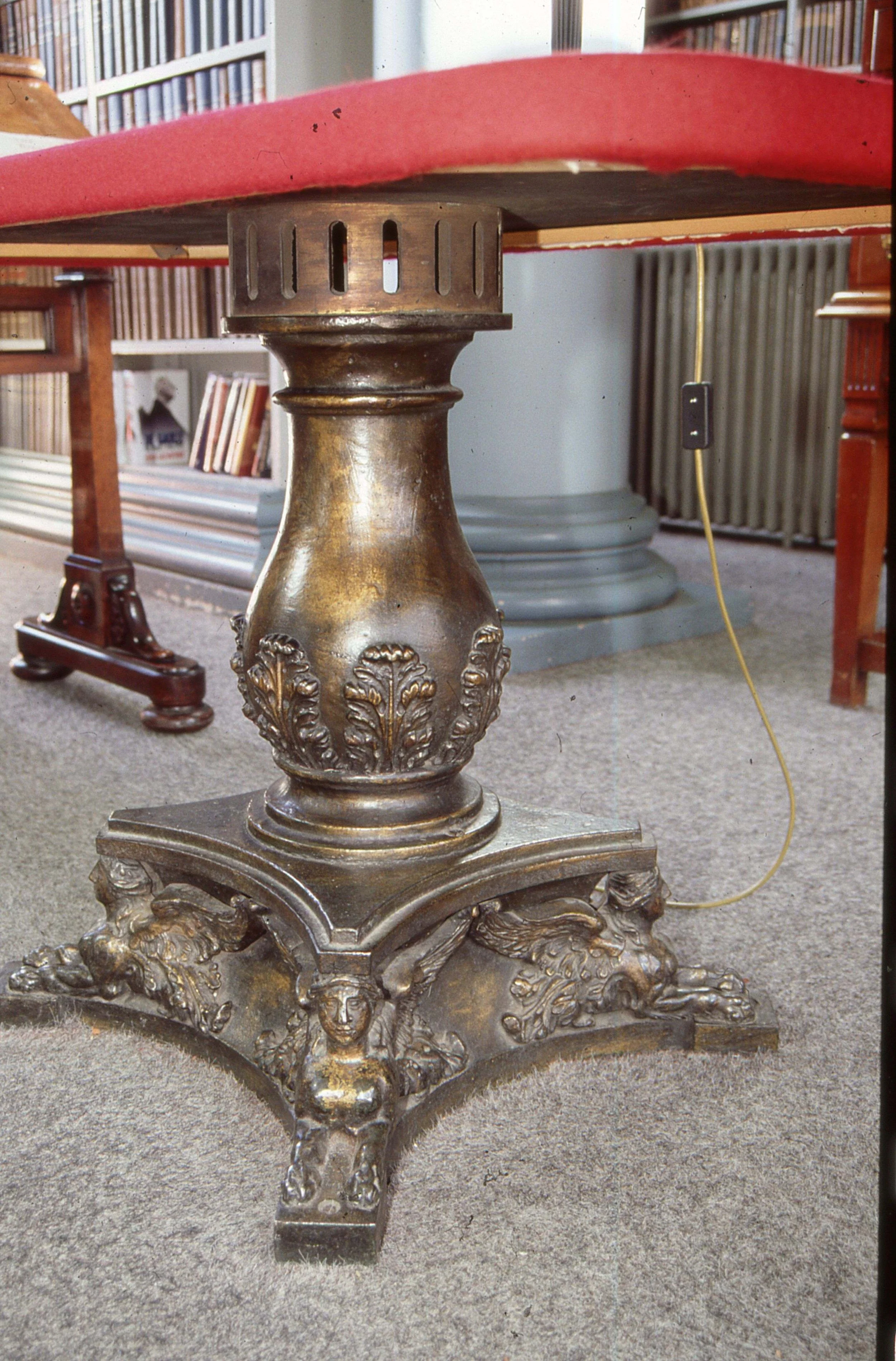One of the most remarkable features of the Signet Library Lower Hall are the ten iron writing tables. When new in 1815, these formed part of what was then a cutting-edge fireproof warm air heating system designed for the Library by the engineer James Jardine, in which a coke stove in what is still today the boiler room generated hot air, which was piped through the floor through the tables and into the Lower Hall. The Society retains the account for the original purchase which shows that the tables cost £105.00 and were supplied by the Edinburgh Iron Foundry of Leith Walk. However, during the Lower Library’s redesign of 1889 the tables were removed from their 1815 positions, since when the original arrangement in the room has been only partly understood.
In October 2024, a chance discovery at the National Library of Scotland revealed a large and unsuspected cache of architectural drawings of the Signet Library and its surrounding area. Amongst these were ten previously unknown Signet Library design drawings by William Stark, the genius behind both Upper and Lower Halls, but the collection also included drawings showing the function and layout of James Jardine’s warm air heating system. These show the original position of each of the ten iron tables and the arrangement of the pipes that supplied them, confirming and clarifying a lot of the thinking about the Lower Hall. (The plans bring surprises with them too. The main drawing of the system is also the earliest record of the Lower Hall as it appeared before the alterations of the 1880s and it reveals the presence of two sets of stairs to the Gallery in 1815 instead of one, the stairs taking up all of Alcoves 1 and 20).
Today, the iron tables (which have recently been restored and recovered) retain the collars that once controlled the flow of warm air, and some still show signs of the original bronze paint. Some, at least, of the original warm air piping is known to survive beneath the floor, with some being temporarily uncovered during the restoration works of 2015. They are among the most remarkable pieces in the Society’s collection, having, as the great architectural historian Ian Gow once remarked, “a strong claim to be the most archetypal pieces of Modern Athenian furniture in the whole of Edinburgh”.



